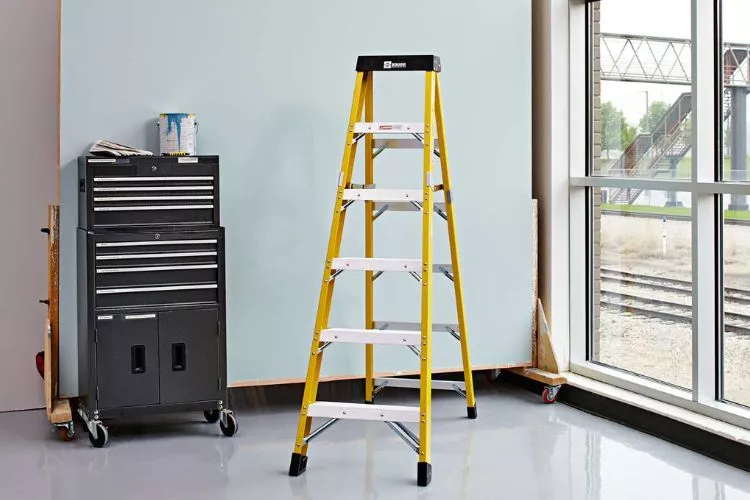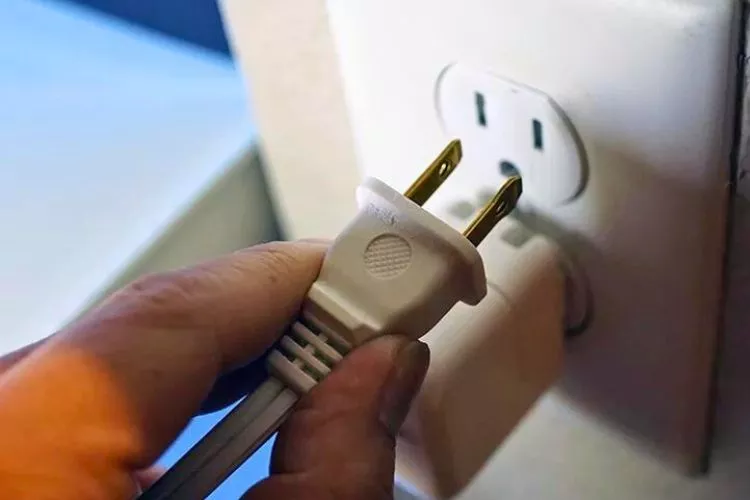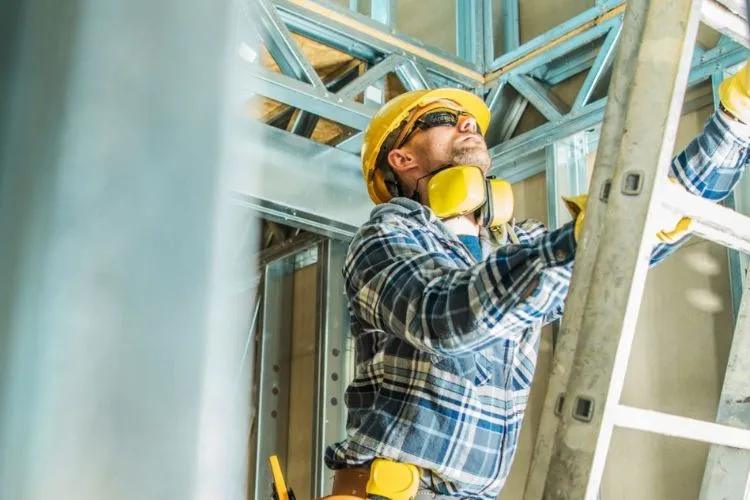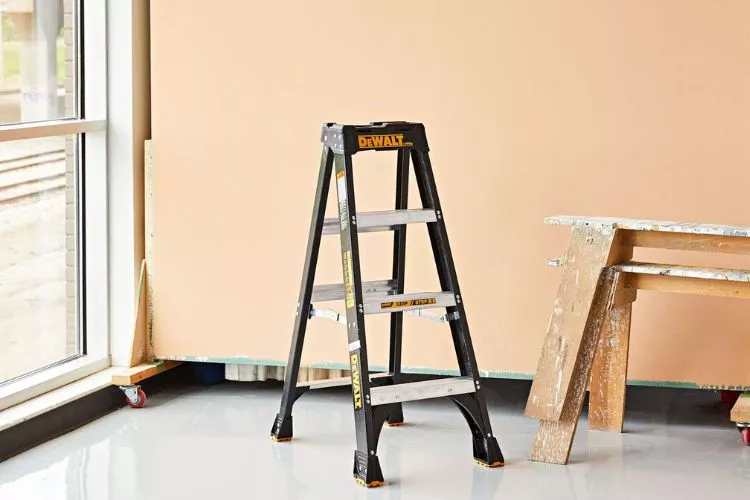It’s no secret that electricians require a unique set of tools and equipment to safely and efficiently complete their daily tasks. Among these tools, one particular item stands out: the fiberglass ladder.
But, why do electricians use fiberglass ladders? Why is it a common factor among professionals of this space?
In this article, we dive deep into understanding why fiberglass ladders hold the top spot in an electrician’s tool kit. We’ll delve into the key characteristics that make this type of ladder an indispensable ally when it comes to safety and practicality.

Whether you’re an aspiring electrician or simply curious about the inner workings of this fascinating profession, this article sheds light on the vital role fiberglass ladders play in the world of electrical work.
Why Do Electricians Use Fiberglass Ladders?
Electricians prefer fiberglass ladders primarily because they offer safety from electrical shocks. Unlike their metal counterparts, fiberglass doesn’t conduct electricity, making it an exceptional choice when working near power lines or circuits.
In addition, these ladders are strong, durable, and resilient to weather changes, contributing to their longevity and reliability in various work environments. Therefore, the use of fiberglass ladders is a critical safety measure for electricians, effectively shielding them from potential electrical hazards while performing their duties.
🪜 Safety from Electrical Shocks
First and foremost, fiberglass ladders provide an invaluable level of safety unmatched by their aluminum or wood counterparts. Fiberglass is non-conductive, meaning electricity does not pass through it.
This characteristic is vital when working with live electricity or in close proximity to electrical sources, as it drastically reduces the risk of electrical shocks.

🪜 Strength and Durability
Fiberglass ladders are prized for their strength and durability. They are known for their ability to withstand heavy weights and prolonged use without losing their shape or structural integrity, making them a reliable choice for rigorous and demanding electrical tasks.
The longevity associated with fiberglass ladders makes it a worthy investment for professionals who deal with critical situations daily.
🪜 Weather Resistance
Fiberglass ladders are robust enough to tolerate harsh environments. Unlike wooden ladders, they won’t warp, split, or crack in the face of fluctuating humidity or temperatures. They’re also rustproof, unlike metal ladders, giving them an added advantage when working in damp conditions or outdoors.
🪜 Non-Slip Properties
Climbing ladders to reach high places is commonplace in electrical work. One major advantage of fiberglass ladders is their non-slip surface, which provides added security for electricians while climbing. Most of these ladders also come with anti-slip feet, offering additional stability when placed on slippery surfaces.
🪜 Lightness and Portability
Despite their sturdy build, fiberglass ladders are surprisingly lightweight, making them easy to transport and maneuver. This lightness doesn’t compromise their strength, meaning electricians can move their ladder efficiently without risking safety.
To summarize, fiberglass ladders play a vital role in electrical work by ensuring safety and efficiency. They are more than just a tool for reaching high places.
They are a critical safety measure, which, when paired with a skilled electrician’s knowledge and caution, significantly reduces the risk of workplace incidents.
What ladders are not safe for electricians?
While fiberglass ladders offer exceptional safety for electricians, certain types of ladders are not suitable when working with electricity. These ladders can introduce unnecessary risks and hazards due to their conductive properties or lack of stability.

🪜 Metal Ladders
Metal ladders, notably aluminum and steel, should be avoided by electricians as they conduct electricity. If a metal ladder comes into contact with a live electrical source, an electric shock or even electrocution may occur, posing a substantial risk to the user.
This scenario is particularly plausible when an electrician accidentally cuts into a live wire or gets too close to an energized overhead power line.
🪜 Wooden Ladders
Wooden ladders may seem like a safer alternative to metal ones for electrical work. While wooden ladders are non-conductive when dry, they can become conductive when damp or wet, which makes them less reliable in various work settings.
Additionally, wooden ladders are more vulnerable to damage from the elements, such as warping, rotting, or splitting, which can compromise their stability and safety.
🪜 Damaged or Unsafe Ladders
Using any ladder that is in poor condition, regardless of its material, is dangerous. Damaged ladders with missing, loose, or bent parts, as well as those with compromised structural integrity, can lead to accidents and injuries. It is crucial to inspect ladders regularly and repair or replace them as needed to ensure the safety of users.
🪜 Ladders Without Non-Slip Features
In the world of electrical work, securing stable footing on a ladder is essential. Ladders with slippery rungs, or that lack non-slip feet, can cause electricians to lose their footing and fall, potentially resulting in severe injuries.
It is vital to choose ladders with non-slip features, such as rubber grip or non-slip shoes, that minimize the risk of falls.
In conclusion, electricians should avoid using metal, wet or damaged wooden ladders, and ladders without non-slip features to ensure their safety on the job. Fiberglass ladders continue to be the safest and most reliable option when working with electricity, offering unparalleled benefits to those in the electrical trade.
What brands of ladders are fibreglass?
There are a number of highly reputable brands known for manufacturing fiberglass ladders, each with their own unique features and benefits to cater to the needs of electricians and other professionals.

- Werner ladders are widely recognized for their reliability and diverse range of products. The brand offers both extension and step fiberglass ladders, accommodating various professional needs.
- Louisville Ladder is another trusted brand that produces fiberglass ladders. Known for their robust construction and safety-enhancing features, Louisville Ladders are used in numerous industries, including electrical work.
- DEWALT, a prominent brand in the construction industry, also manufactures fiberglass ladders. Their offerings are renowned for their durability and strength, making them a safe choice for electricians.
- Gorilla Ladders is especially noted for their fiberglass hybrid ladders. Their ladders are designed to offer versatility along with safety while working with electricity.
It’s important to note that product availability and specific models can vary by region and are subject to changes by the manufacturers.
All the mentioned brands value safety and dependability, which is why they are preferred by professionals across the globe. However, the most appropriate ladder can depend on the specific requirements and preferences of the user. It’s always recommended to research and review customer feedback before making a purchase.
Frequently Asked Questions (FAQs)
What is the problem with fiberglass ladders?
One issue with fiberglass ladders is that they can crack or splinter over time, especially if mistreated or exposed to harsh elements frequently. This can compromise their stability and safety. Further, they can be bulkier and heavier than their aluminum counterparts, causing difficulty in transport and maneuvering.
Does sunlight affect fiberglass ladders?
Prolonged exposure to sunlight can deteriorate and weaken fiberglass ladders. UV radiation breaks down the fibers in the ladder structure, causing it to become brittle and prone to damage or breakage.
Are fiberglass ladders expensive?
Generally, fiberglass ladders are more expensive than aluminum or wooden ladders. This is due to their superior safety features, strength, durability, and resistance to weather changes – factors which justify the higher cost. However, considering the long-term safety and durability offered, they are considered a worthy investment by professionals.
Is it OK to leave a fiberglass ladder outside?
It is not recommended to leave fiberglass ladders outside for extended periods. While they are more weather-resistant than wooden ladders, prolonged exposure to the elements, especially sunlight, can degrade the material and reduce its lifespan.
How do you protect a fiberglass ladder?
Protecting a fiberglass ladder involves proper storage and maintenance. Ladders should be stored in a protected, dry area away from sunlight and extreme temperature changes. Regular inspections for any signs of damage, such as cracks or splinters, are necessary. Cleaning the ladder frequently by wiping off dirt and grime can also prolong its durability.
Conclusion:
The use of fiberglass ladders has become an industry-wide best practice for electricians, primarily due to its insulation properties, offering unmatched safety when working with electricity.
Beyond safety, fiberglass ladders bring robustness, weather resistance, non-slip characteristics, and portability to the table. While these ladders can command a higher upfront cost, the invaluable role they play in ensuring electricians’ safety justifies the expense.
Despite a few challenges such as susceptibility to sunlight damage and bulkiness, the positives overshadow the few drawbacks.
This analysis underlines the necessity for fiberglass ladders in electrical work, making them the undisputed choice for electricians.


